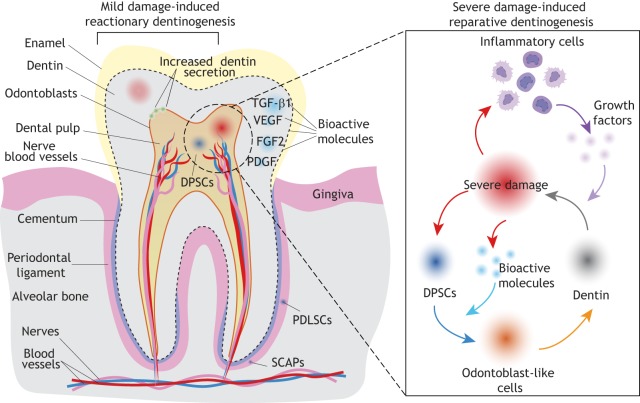Fig. 6.
Dentin repair in the human molar. Schematic of a human molar showing dentin mineralization around the dental pulp, enamel deposition on the tooth crown, and cementum coverage around the root surface. The tooth is attached to the alveolar bone via periodontal ligaments. The dental pulp houses blood vessels and nerves. Various types of stem cells, such as dental pulp stem cells (DPSCs), periodontal ligament stem cells (PDLSCs) and stem cells from the root apical papilla (SCAPs) can be found in the dental pulp and periodontal ligament around the tooth root. Mild injury induces reactionary dentinogenesis, which stimulates increased dentin secretion by odontoblasts. By contrast, reparative dentinogenesis takes place in response to severe injury and requires the recruitment of dental progenitors, which differentiate into odontoblast-like cells to fuel dentin production. Bioactive molecules released from mineralized dental tissues, as well as growth factors produced by recruited inflammatory cells, can promote both odontogenesis and tissue repair.

